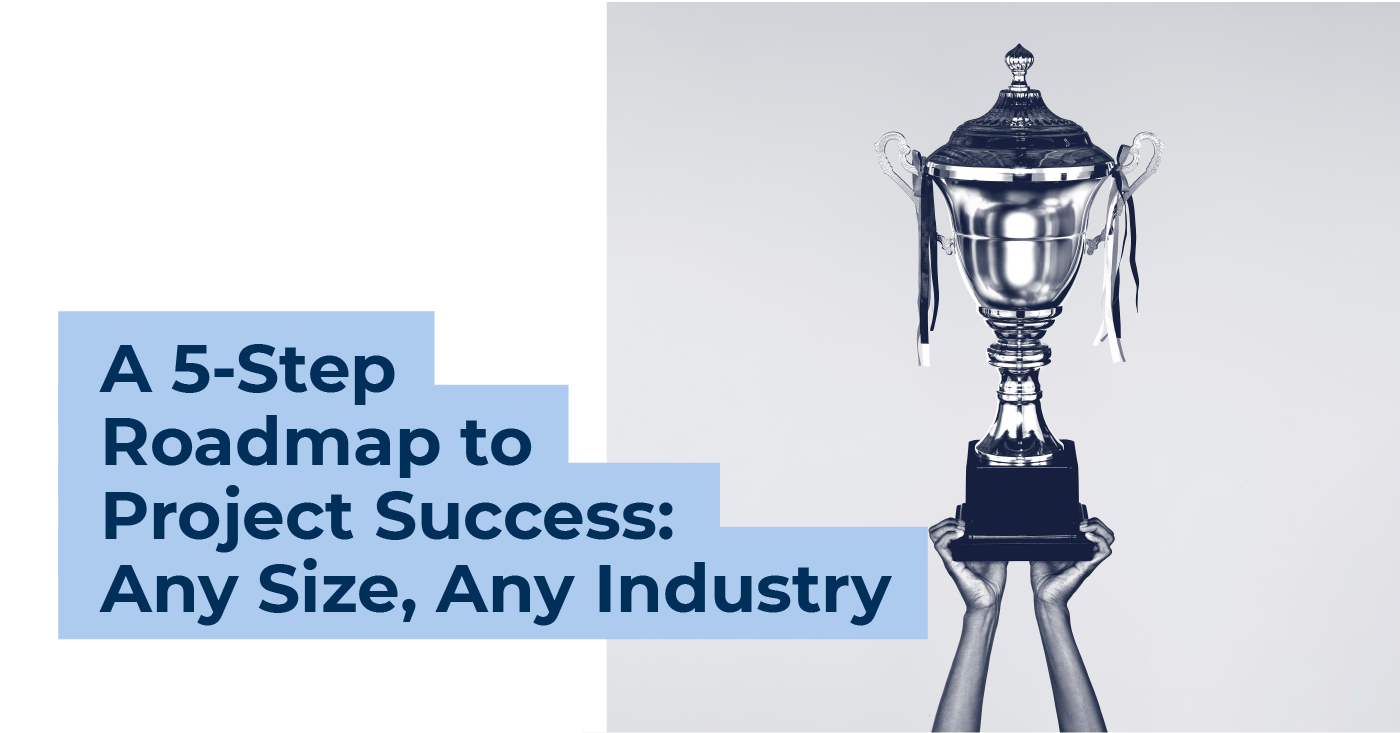The nature of projects is such that it often involves many shifting resources and varying tools and processes. Some projects engage with external contractors and vendors, while others are completed internally. Some require sign off from multiple key stakeholders, while others are managed by one designated project manager.
This disparity often leads to a lack of proper documentation, inconsistent workflows, and siloed communication across teams. As a result, organisations are left to deal with higher incremental costs, wasted time on redundant processes, and indirect paths to execution and delivery.
To successfully manage projects – of any size in any industry – from initiation to completion, you need consistent processes, centralised information, and real-time tracking.
Follow our 5-step roadmap anytime you are embarking on a new project for improved process consistency and overall project success.
Step 1: Streamline your strategic planning process
First, outline the key components of a typical project to better understand the resources, budget, and time that should be allocated towards the initiative.
- Create templates for outlining key project details, such as vision and goals, team objectives and timelines, and budgets.
- Ensure planning templates are accessible to all stakeholders, contractors, and vendors who would participate in the project.
- Set realistic deadlines and goals for tasks, and create a visual timeline to track them.
- Outline project budget expectations to ensure budgets are discussed before project kick-offs, and loop in all stakeholders for buy-in.
Step 2: Strategise on project intake and prioritisation
If you are managing a project management function within your business and have multiple projects that come your way at any given time, you need to be able to determine a consistent way to manage, prioritise, and gain approval on new initiatives
- Outline and document steps to prioritise new projects
- Standardise the project intake process by setting up a project request form that outlines all necessary project details.
- Set and formalise project approval standards with key stakeholders - see the project intake dashboard template for a bird’s eye view of the health and status of all projects as well as to jet notified when new projects are submitted
Step 3: Plan for flexible project initiation and execution
Efficiently carrying out a project in a timely manner relies on a streamlined execution process that also allows for unexpected changes, without completely derailing your timelines.
- Streamline project initiation by creating a project launch template, with clear details on each phase of the project and tasks underneath them.
- Facilitate team collaboration across both internal and external stakeholders by keeping project details and reports up to date throughout execution.
- Document steps to identify and mitigate potential risks or success blockers and make them visible to your team.
Step 4: Manage project visibility
Create one location for project details that enables your team to easily access, manage, and collaborate on tasks and provides a real-time view into status.
- Ensure accountability by creating a tracking report to identify who is responsible for each task and ensure that everyone knows their priorities.
- Establish steps for assigning and re-allocating resources, and ensure your resourcing plan is visible across teams. If your team members are going on vacation or important in-person sales meetings, you can track all non-project resourcing updates in a resource management template.
- Set up tracking and reporting guidelines to ensure budgets are managed throughout the project, and create a budget tracking report for your team to reference.
Step 5: Take steps to ensure overall team collaboration
We know that collaboration is critical in modern workplaces, but it’s not enough to just organise team-building exercises or attend meetings between different business functions. Whether in tangible terms like putting the correct collaboration tools in place, or creating an enduring culture where employees are encouraged to communicate and work together – it’s evident that collaboration is the bedrock of any project’s success.
- Communication throughout the lifecycle of the project is key, so make sure you have a consistent plan in place that allows for collaboration during every step of the process.
- Ensure stakeholders have a place to provide comments and attach feedback within the project plan and throughout execution.
- Set up automated alerts to notify stakeholders when specific deliverables are due, or as project timelines and tasks change.
- Document how teams and project managers should work together to improve collaboration and increase efficiency.
Conclusion
Delivering successful projects and initiatives relies on consistent processes that can easily be managed, tracked, and repeated by all team members.
It’s also important to have processes that strike a balance between the consistency necessary for projects to scale, and flexible work management so users can actually get the work done.
Once you’ve defined the right processes, allow your team to adapt to the nuances of individual projects and be effective, all while ensuring you have visibility to stay ahead of risks that could impact deadlines or achieving the project’s goal.
With Smartsheet – the enterprise platform for dynamic work – you can make the move to more efficient project management today with our 30-day free trial that comes with access to many pre-structured and customisable templates. Streamline your projects by following these best practices to increase consistency, from project initiation to completion.
